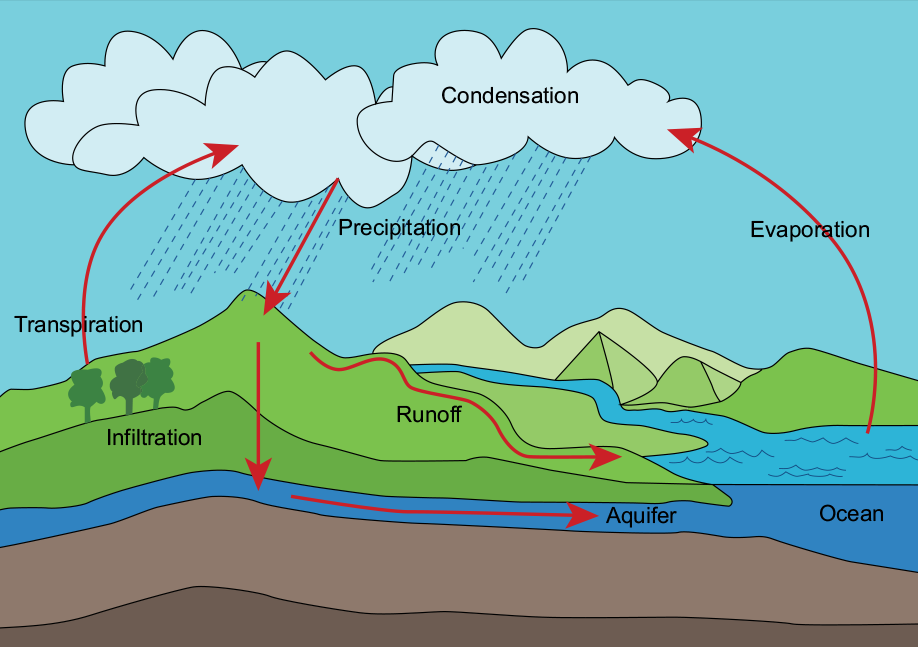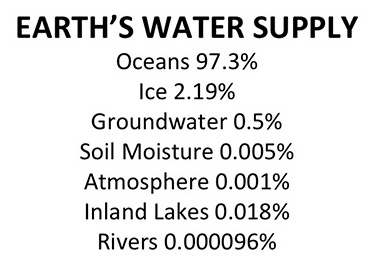Background Agricultural Connections
One of the most important natural resources that covers the earth’s surface is water. All living things depend on water for survival. As the world population continues to grow, more and more people, plants, animals, and other living creatures need water to live. Water is a renewable resource used over and over through evaporation, transpiration, and precipitation. The water that is on earth now is the same water that has always been here. No “new” water is being made.
The movement of water in and around the earth is called the water cycle. The water cycle is continuous. Rain or snow falls on oceans and land as precipitation. The soil will soak up some of the water. Plants will take up some of this water through their roots, and some water will move down through the soil to become groundwater. Some of the water from the rain and snow will run off the land into streams, marshes, lakes, and oceans. The water that remains on the earth’s surface is called surface water. The surface water will return to the atmosphere through evaporation. Then water vapor may form clouds that cause precipitation—rain or snow—to occur again. The precipitation will return to the surface of the earth, and the cycle will continue. Through different stages of the water cycle, water can be liquid, solid, or gas.
Water is extremely important for crop production because crops (plants) need water to grow. A good crop of corn or soybeans needs at least 20 inches of water a year. Yet, almost every year, the corn and soybeans’ water is limited to some degree by drought. Drought occurs when there is a lack of water. Some years the summer rainfall is below normal, and some years there are varying amounts of rainfall throughout the season. For this reason, more and more farmers are installing irrigation systems to ensure that their crops receive an adequate amount of water. Irrigation means watering land with artificial methods, or man-made watering. Water is taken from lakes, rivers, streams, and wells, transported to croplands, and used to water the crops. Irrigation is used in areas that go without rainfall for a long time. Places such as the southwestern United States, Egypt, and Italy use irrigation during dry periods or all year.
 Organize students into groups of two and explain the directions for the Water Cycle in a Cup activity. Review key vocabulary that are labeled on the
Organize students into groups of two and explain the directions for the Water Cycle in a Cup activity. Review key vocabulary that are labeled on the 